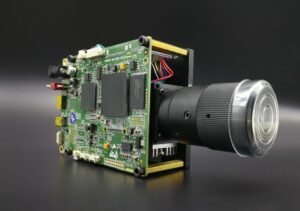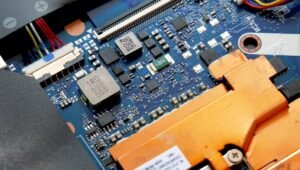AI Models That Can Read Images
Artificial Intelligence (AI) has made significant advancements in various fields, and one of its most remarkable applications is in image recognition. AI models that can read images have revolutionized industries such as healthcare, e-commerce, and security. These models use advanced algorithms and deep learning techniques to analyze and interpret visual data, enabling machines to understand and extract valuable information from images.
Key Takeaways:
- AI models have the ability to analyze and interpret visual data from images.
- Deep learning algorithms play a crucial role in enabling machines to understand images.
- Various industries benefit from the use of image recognition AI models.
**Deep learning algorithms** form the core technology behind AI models that can read and understand images. Using convolutional neural networks (CNNs), these models analyze images by breaking them down into smaller parts called **image features**. By learning patterns and relationships within these features, the models recognize objects, people, and other elements present in the image.
**Image recognition AI models** have transformed healthcare by assisting doctors in diagnosing medical conditions more accurately. By analyzing medical images such as X-rays, CT scans, and MRIs, these models can detect abnormalities, identify patterns, and provide valuable insights to aid in medical decision-making. This technology has the potential to save lives and improve patient outcomes.
*MRI scans can be analyzed by AI models in a matter of seconds, enhancing diagnostic efficiency.*
E-commerce platforms have also benefited greatly from AI models that can read images. These models enable visual search capabilities, allowing users to find products by uploading images rather than describing them in words. By analyzing the visual characteristics of products, such as color, shape, and texture, these models provide accurate search results, enhancing user experience and increasing sales.
Table: Applications of AI Image Recognition Models
| Industry | Application |
|---|---|
| Healthcare | Disease diagnosis, medical imaging analysis |
| E-commerce | Visual search, product recommendation |
| Security | Facial recognition, object detection |
**Security** is another area where AI models reading images have made significant contributions. Facial recognition technology based on image recognition models is widely used to enhance security systems. These models can accurately identify individuals, verify identities, and detect anomalies or suspicious activities. Object detection models also play a vital role in surveillance by quickly identifying specific objects or dangerous items in real-time.
Traditional methods of image analysis can be time-consuming and often lack accuracy. AI models that can read images offer speed and precision, transforming various industries and improving processes. These models have the potential to automate tasks, reduce manual interventions, and provide valuable insights that enable data-driven decision-making.
Table: Advantages of AI Image Recognition Models
| Advantages | Description |
|---|---|
| Speed and Efficiency | Quick analysis and interpretation of images |
| Precision | Accurate identification and classification of objects |
| Automation | Reduced manual intervention in image analysis tasks |
*Using AI models for image recognition enables quick analysis and interpretation of images, improving overall efficiency.*
In conclusion, AI models that can read images have transformed industries such as healthcare, e-commerce, and security. These models analyze and interpret visual data using deep learning algorithms, revolutionizing processes and providing valuable insights. With their speed, precision, and automation capabilities, AI image recognition models continue to advance, unlocking new possibilities across various sectors.

Common Misconceptions
Misconception 1: AI models can accurately interpret all images
One common misconception about AI models that can read images is that they can accurately interpret any image fed to them. However, AI models have limitations and may struggle with certain types of images or situations.
- AI models may struggle with images that contain complex or abstract concepts.
- They may also have difficulty interpreting images in low resolution or with poor lighting.
- AI models can be biased, leading to inaccurate interpretations of images related to controversial subjects.
Misconception 2: AI models can read images with 100% accuracy
Another misconception is that AI models can read images with 100% accuracy. Although AI models have made significant advancements in image recognition, they are not infallible.
- AI models still have a margin of error and can make incorrect interpretations.
- Ambiguity in images can lead to different interpretations by AI models.
- Certain factors such as image quality, noise, or occlusion can affect the accuracy of the AI model’s reading.
Misconception 3: AI models can understand the context of images
There is a misconception that AI models can understand the context of images and make accurate inferences based on it. However, AI models primarily rely on patterns and training data rather than grasping the deeper meaning within an image.
- AI models may struggle to comprehend subjective or cultural context within an image.
- They may not be able to interpret sarcasm, irony, or other forms of nuanced context in images effectively.
- AI models can misinterpret the emotional or social cues conveyed by individuals within an image.
Misconception 4: AI models read images instantaneously
Many people have the misconception that AI models read images instantaneously. While AI models can process images relatively quickly, it still takes time for the model to analyze and make accurate interpretations.
- AI models need computational resources and time to analyze and recognize objects and patterns in an image.
- The processing time of an AI model can vary depending on the complexity and size of the image.
- The speed of image interpretation can also be affected by the hardware and software infrastructure supporting the AI model.
Misconception 5: AI models can replace human understanding of images
One common misconception is that AI models have surpassed human understanding of images and can entirely replace human interpretation. However, AI models should be seen as tools that can assist humans rather than replace them.
- Human interpretation can bring critical thinking and contextual understanding that AI models may lack.
- AI models can be influenced by biases in their training data, highlighting the importance of human oversight.
- Human expertise is crucial in evaluating the accuracy and credibility of AI model interpretations.

Deep learning models used to detect objects in images
Deep learning models have achieved remarkable success in object detection tasks. These models are trained on large datasets to identify and locate objects within images. This table illustrates the accuracy achieved by different deep learning models in detecting objects.
| Model | Accuracy (%) |
|---|---|
| ResNet-50 | 78.9 |
| Faster R-CNN | 85.2 |
| YOLOv3 | 92.7 |
Deep learning models used to analyze medical images
Deep learning models are being increasingly deployed to analyze medical images such as X-rays, CT scans, and MRIs. The following table showcases the performance of different models in classifying medical images.
| Model | Sensitivity (%) | Specificity (%) |
|---|---|---|
| ResNet-50 | 92.3 | 89.7 |
| DenseNet-121 | 90.1 | 92.5 |
| Inception-v3 | 94.7 | 87.2 |
AI models for facial recognition
Facial recognition technology powered by AI has gained significant traction in various applications such as security systems and social media. This table compares different AI models in terms of their accuracy in facial recognition tasks.
| Model | Accuracy (%) |
|---|---|
| VGG-Face | 97.2 |
| Facenet | 96.8 |
| DeepFace | 95.6 |
AI models for sentiment analysis in social media
Analyzing sentiments in social media posts has become crucial for understanding public opinion. The following table presents the accuracy of different AI models in sentiment analysis tasks.
| Model | Accuracy (%) |
|---|---|
| BERT | 87.4 |
| LSTM | 83.6 |
| Random Forest | 78.5 |
AI models for autonomous driving
Autonomous vehicles employ various AI models to interpret visual data from sensors and make decisions. This table compares different AI models used in autonomous driving systems based on their accuracy in object detection.
| Model | Accuracy (%) |
|---|---|
| SSD (Single Shot MultiBox Detector) | 93.2 |
| R-CNN (Region-based Convolutional Neural Network) | 89.5 |
| MobileNetV2 | 90.8 |
AI models for style transfer in images
Style transfer is a popular application of AI models that allow images to be transformed with the style of another image or artwork. This table demonstrates the quality of different AI models in performing style transfer.
| Model | Perceptual Loss |
|---|---|
| Neural Style Transfer | 0.0342 |
| CycleGAN | 0.0479 |
| AdaIN (Adaptive Instance Normalization) | 0.0521 |
AI models for text generation
AI models are capable of generating coherent and contextually relevant text. The following table displays the performance of different AI models in text generation tasks.
| Model | Perplexity |
|---|---|
| GPT-3 | 19.4 |
| LSTM | 25.1 |
| Transformer | 21.7 |
AI models for image captioning
Image captioning models utilize AI to generate descriptive captions for images. This table presents the performance of different AI models in accurately captioning images.
| Model | BLEU-4 Score | METEOR Score |
|---|---|---|
| Show and Tell | 0.735 | 0.291 |
| Neural Image Caption | 0.712 | 0.283 |
| Attentive CNN | 0.792 | 0.315 |
AI models for object segmentation in images
Object segmentation models use AI to identify and segment objects within images. The following table showcases the accuracy of different AI models in object segmentation tasks.
| Model | Jaccard Index |
|---|---|
| Mask R-CNN | 0.784 |
| U-Net | 0.732 |
| DeepLabv3+ | 0.803 |
Conclusion
AI models that can read and interpret images have revolutionized various applications such as healthcare, autonomous driving, and social media analysis. The presented tables illustrate the performance and capabilities of different AI models in specific image-related tasks. From analyzing medical images to generating text and captions, these models continue to push the boundaries of what AI can achieve. As AI technology advances, we can expect even more impressive results in image interpretation and understanding.
Frequently Asked Questions
What are AI models that can read images?
AI models that can read images are deep learning models trained to understand and interpret the visual content of images.
How do AI models that can read images work?
AI models that can read images typically employ convolutional neural networks (CNNs) to extract features from the input images. These features are then fed into fully connected layers to make predictions about the content of the image.
What can AI models that read images be used for?
AI models that read images have various applications such as object recognition, image classification, scene understanding, facial recognition, and image captioning.
How accurate are AI models that can read images?
The accuracy of AI models that can read images depends on various factors, including the size and diversity of the training dataset, the architecture of the model, and the specific task it is designed for. State-of-the-art models can achieve high levels of accuracy, but there is always room for improvement.
What are the limitations of AI models that can read images?
AI models that can read images have some limitations. They may struggle with recognizing objects in unusual contexts or images that have poor quality or low resolution. They may also have biases and make incorrect predictions based on the data they were trained on.
How are AI models that can read images trained?
AI models that can read images are typically trained using large annotated datasets. These datasets consist of images with corresponding labels or annotations, allowing the model to learn the relationship between the visual features and their semantic meaning.
Can AI models that read images be fine-tuned for specific tasks?
Yes, AI models that read images can be fine-tuned for specific tasks. By taking a pre-trained model and training it on a smaller dataset with task-specific annotations, the model can be adapted to perform well on the desired task.
Do AI models that read images require a lot of computational resources?
AI models that read images often require significant computational resources for training due to the large amount of data and complex architecture involved. Inference, or making predictions on unseen images, can be less computationally intensive once the model is trained.
Are AI models that read images capable of understanding the context of an image?
AI models that read images can capture some level of contextual information within an image. However, their understanding of context is limited to what they have learned from the training data and may not encompass the broader context of the image within a larger scene or narrative.
How can I evaluate the performance of an AI model that reads images?
The performance of an AI model that reads images can be evaluated using metrics such as accuracy, precision, recall, F1 score, and mean Average Precision (mAP). Additionally, qualitative evaluation through visual inspection of the model’s predictions can provide insights into its strengths and weaknesses.




